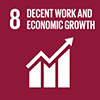Description/achievement of initiative
In 2005, Mexico City opened Metrobus, a Bus Rapid Transit System, along one of the city's busiest streets. It has, for example, contributed to the reduction of commute time from 1.5 hours to 1 hour for the route, and reduction of CO2 -emissions by 35,000 tons annually.
Source: World Resources Institute (2011) A Compilation of Green Economy Policies, Programs, and Initiatives from Around the World. The Green Economy in Practice: Interactive Workshop 1, February 11th, 2011
In 2005, Mexico City opened Metrobus, a BRT corridor along one of the city's busiest streets. Metrobus replaced about 350 standard buses with 97 new articulated BRT vehicles. Some of the BRT vehicle are owned by a private company, CISA, and some are owned by a public company, RTP. Vehicles have a maximum capacity of 160 passengers and run at extremely high frequencies, roughly 56 per peak hour along the northern half of the route. Currently, the BRT is carrying roughly 250,000 passengers per day. There is a trust fund that manages, invests, and distributes all fare revenues. The trust fund contracts directly with a fare collection contractor which, among other things, provides fare collection equipment, sells smartcards, collects the cash, and deposits the cash with the trust fund. Given the program's success, the new Mayor of Mexico City, Marcelo Ebrard, is actively considering building 10 more Metrobus corridors.
Mexico City Government supported the planning, coordination, rectory and management as well as the financing of the construction and maintenance of the corridor infrastructure.RTP and CISA formed a private trust that is responsible for the administration and distribution of total revenues from Metrobus. A private company was hired to finance, provide and operate the technology platform for the use of a smart card for toll collection.
The benefits of the BRT are as follows:
- Reduced commute time from 1.5 hours to 1 hour for the route;
- Reduced passenger exposure to CO, benzene, and PM 2.5 by up to 50 percent, as compared with previous bus service in the corridor;
- Reduction of CO2 by 35,000 tons annually;
- Increased market opportunities for rapid transit buslines.
Implementation methodologies
Arrangements for Capacity-Building and Technology Transfer
Coordination mechanisms/governance structure
Partner(s)

